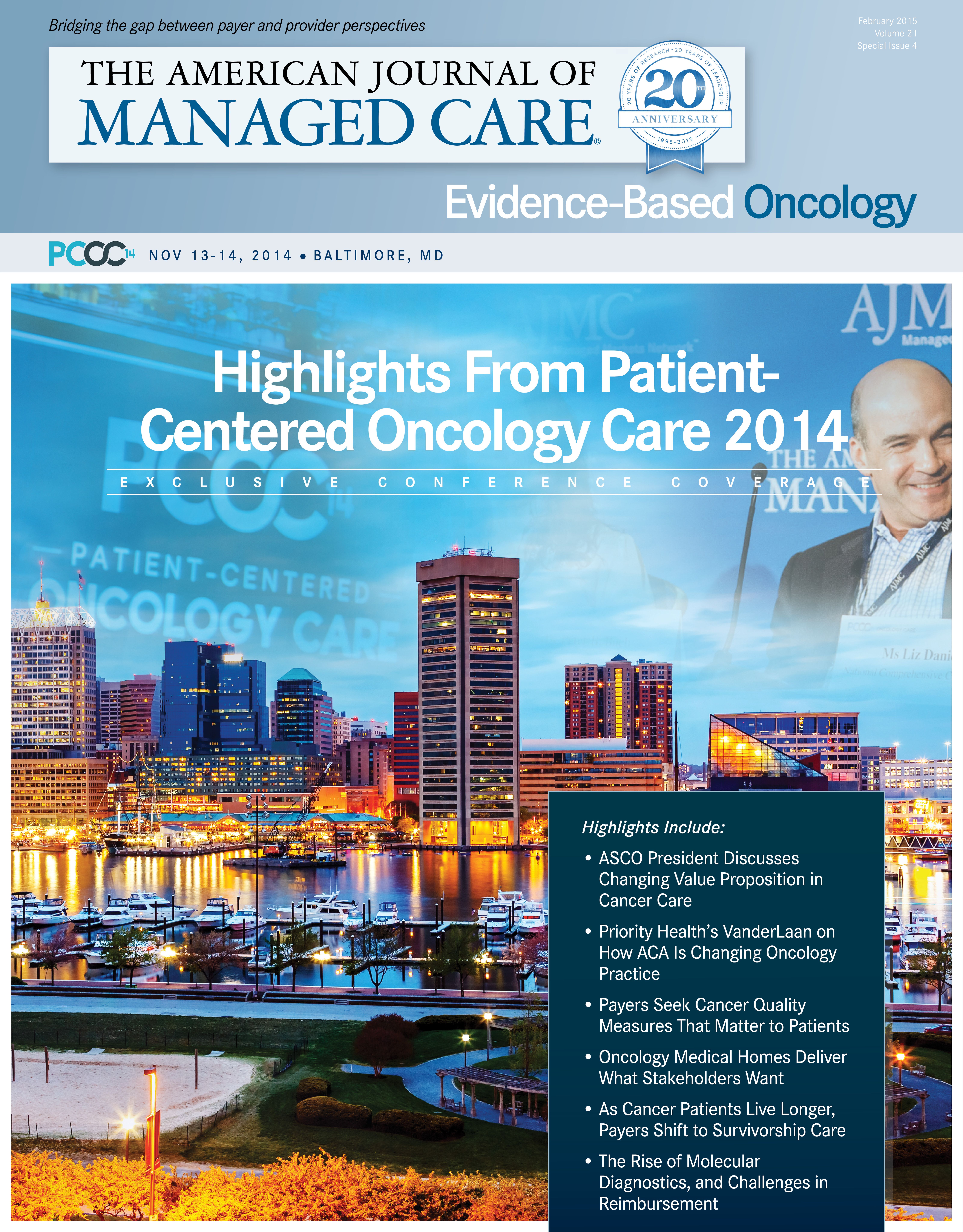Publication
Article
Evidence-Based Oncology
For Better Quality of Life, Start Palliative Care Early in Process
Author(s):
If palliative care were a new cancer drug on the market it would be broadly embraced, heralded for its ability to improve the quality of life of cancer patients and, in the case of those with metastatic lung cancer, extend life by 2.7 months.1 Instead, palliative care is a process unevenly funded by insurers and far from universally available, said Marian Grant, DNP, RN, CRNP, and assistant professor at the University of Maryland School of Nursing.
Grant’s talk, “When Is the Right Time for Palliative Care?” began the first evening of Patient-Centered Oncology care in Baltimore, November 13, 2014. She answered her own topic question unequivocally: “The right time for palliative care is the sooner the better, and the evidence supports that,” she said Grant’s talk at the 2-day session hosted by The American Journal of Managed Care outlined the many barriers to making palliative care a standard practice in cancer treatment. A lay person often confuses the term with hospice, which is a form of palliative care limited to those within the last 6 months of life, though in practice few patients get the full 6 months of hospice. One big reason is that the patient must make the wrenching decision to cease curative treatment to enter hospice.
“I have a background in sales and marketing,” Grant said. “I am a pretty good salesman, but I can’t sell anyone on the idea of ceasing treatment they believe is extending their life.”
Palliative care, taken more holistically, is “an extra layer of support,” she said, that meets the emotional and spiritual needs of both patients and their families, who both suffer from a wide range
of stress in addition to pain and other physical symptoms. “That sounds a little fluffy, but when you explain it to patients and their families, it sounds pretty good to them,” she said. Palliative
care supports patients and families as they consider how to manage end-of-life treatment before events sweep the patient into intensive care they don’t want and which can’t extend their lives,
Grant explained. In that way, palliative care saves money, but increasingly, the evidence shows that it actually extends life as well.
Grant cited a well-known study of lung cancer patients published in the New England Journal of Medicine in 2010. Half the patients were given usual standard of care and half were given an intervention of palliative care. The finding that those who received palliative care had better quality of life and less depression was not a surprise; but the improved survival time caught the attention of the medical world, including the American Society of Clinical Oncology.1 To fully achieve those benefits, palliative care needs to begin as early as diagnosis.
“I get called all the time very late in the game,” Grant said, adding that she is often not consulted until patients are in intensive care. “Families often tell me, ‘You know, she never would have wanted any of this.’”
Options are changing with the Affordable Care Act. Pediatric patients can have curative treatment and hospice at the same time. The Center for Medicare and Medicaid Innovation is running trial studies to allow this option for adults, too, Grant said.
Grant believes the biggest challenge is the seemingly impossibile one of training enough specialists. There will never be enough specialists, and they will be concentrated in large hospitals and academic medical centers, so nurses and oncologists need to be “deputized” with training in the basics of palliative care to make it available in outpatient clinics and rural communities, Grant said. “There’s no evidence of harm, or excessive costs for doing so,” she said. “There are a lot of pros and very few cons.”
Reference
1. Temel JS, Greer JA, Muzikansky A. Early palliative care for patients with metastatic non-small cell lung cancer. N Engl J Med. 2010;363(8):733-742.


